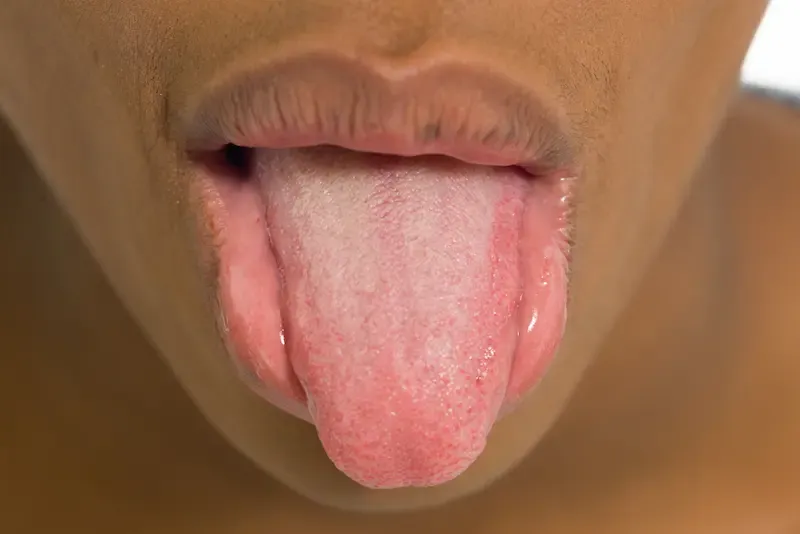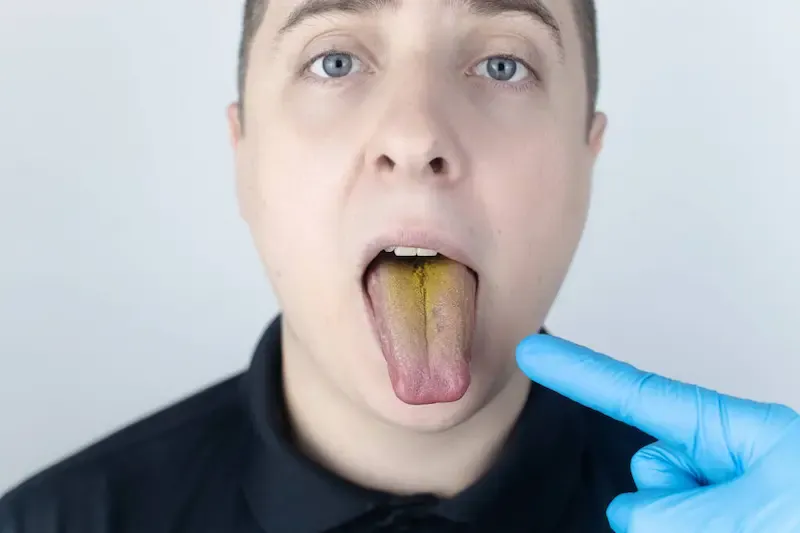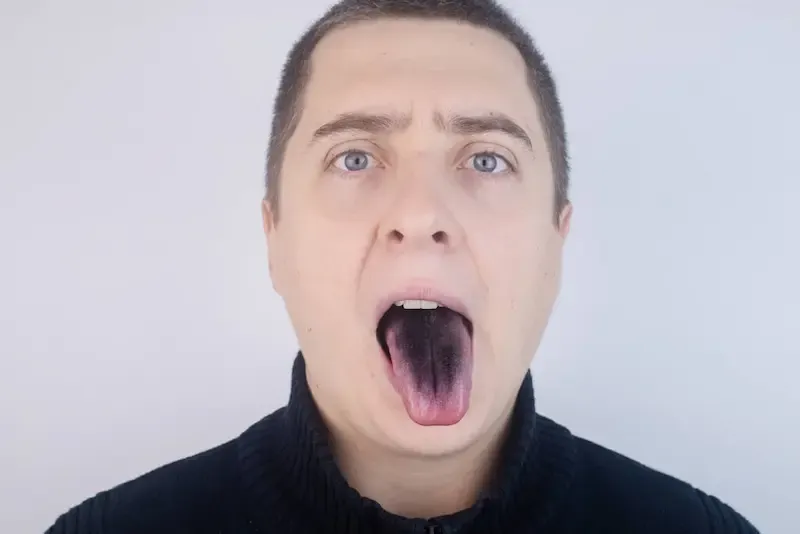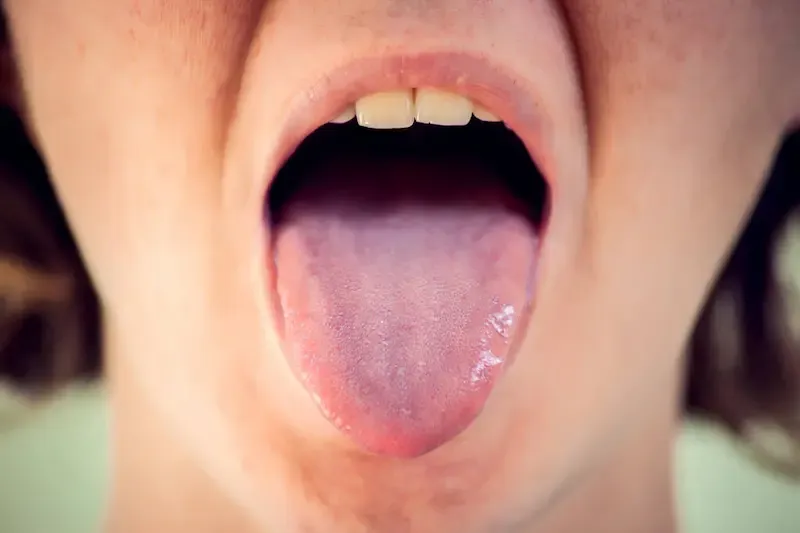Have you ever taken a moment to glance at your tongue in the mirror? While it may seem like a trivial part of your body, the color of your tongue can actually reveal important clues about your health. From vibrant reds to muted whites and even shades of blue, each hue tells a unique story about what’s happening inside you.
As an often-overlooked aspect of our physical wellness, monitoring the color of your tongue could enhance your understanding of your body’s signals.
In our busy lives, we tend to focus on major health concerns, yet subtle cues from our bodies—like changes in tongue color — can be just as vital. These signals might point to nutritional deficiencies, hydration levels, or even underlying medical issues that deserve attention.
By learning how to interpret these colors and what they signify, you not only empower yourself but also embrace a proactive approach toward maintaining your overall health.
Curious? Let’s go deeper into this fascinating topic and uncover the secrets that your tongue may be revealing about you!
The Science Behind Tongue Color
The color of your tongue can serve as a fascinating barometer for gauging your overall health. It may seem trivial, but the tongue is richly vascularized and connects to various body systems, making its hue an important indicator of what’s happening within. When you look at your tongue in the mirror, you’re seeing not just muscle and papillae but also a reflection of your oral microbiome and, consequently, your body’s internal state. Variations in color can signal everything from mild dehydration to serious infections or deficiencies.
One notable aspect is the role that blood circulation plays in determining tongue color. Healthy blood flow brings oxygen and nutrients to tissues throughout the body, including the tongue. If this circulation is compromised — whether due to dehydration or other systemic issues — the appearance of your tongue might shift accordingly. For example, a pale or white coating could suggest anemia or lack of sufficient hydration since these conditions affect how vibrant and pink healthy tissue appears.
Additionally, the oral microbiome significantly contributes to tongue coloration and texture. The mouth is home to trillions of bacteria that usually coexist harmoniously; however, imbalances — often caused by poor dietary choices, medications, or lack of oral hygiene — can lead to overgrowths that culminate in changes like a white film on the surface of the tongue. This microbial environment serves as an ecosystem where both good and bad bacteria thrive. A disrupted microbiome can show through alterations in tongue appearance which may be reflective of larger health issues in play.
So, if you’ve ever noticed fluctuations in your tongue’s color during times of stress or illness, you’re not alone! Conditions such as fever can alter blood supply and thus change the coloration temporarily. This dynamic relationship between our physiology and what we observe on our tongues underscores why it’s essential to take note of those subtle shifts before they escalate into more significant health concerns.
Normal Tongue Appearance
A healthy tongue is usually a bright pink hue and has a consistent, smooth texture. It should be free of any discolorations or coatings and possess a slightly moist surface. If you observe closely, you’ll notice tiny papillae (the small bumps) covering most of its surface, contributing to its unique texture. A normal tongue is not only indicative of good oral health but also reflects an individual’s overall well-being. Just like the skin on our body can vary in color due to factors such as sun exposure or genetics, our tongues can exhibit slight variations based on similar influences.
Variations in tongue color can arise from several factors, including diet and hydration levels. For instance, consuming foods rich in pigments — such as beets or blueberries — can temporarily alter the shade of your tongue but should return to normal once these foods are no longer part of your meal plan. Similarly, dehydration may result in a drier appearance; therefore, maintaining adequate fluid intake is crucial for both your mouth’s health and overall body function. Further, lifestyle choices like smoking can lead to changes in the tongue’s coloration or texture over time.
Other aspects that contribute to the normal variations include hormonal changes and digestive health. Women may notice differences during menstrual cycles or pregnancy due to fluctuating hormone levels impacting circulation and blood flow — factors that certainly play a role in tongue pigmentation. Additionally, gastrointestinal issues might manifest subtly on your tongue before any other signs appear elsewhere in your body; thus pay attention when you spot anything unusual during oral care routines.
Understanding what constitutes a “normal” appearance for your tongue isn’t just about recognizing shades; it’s about developing awareness of how everyday habits affect this often-overlooked indicator of health. Taking note of any regular changes combined with occasional self-inspection could very well act as an early warning system for underlying issues that might require further exploration with medical professionals.
White Tongue: What It Means
A white-coated tongue can be concerning, as it often signals a potential underlying health issue. This discoloration can result from various factors, particularly the buildup of dead cells, bacteria, and debris on the surface of the tongue. One common cause is oral thrush, a fungal infection caused by an overgrowth of Candida yeast. Individuals with compromised immune systems, such as those undergoing chemotherapy or living with conditions like diabetes, are more susceptible to developing this condition. Alongside visible changes on the tongue, oral thrush may also present symptoms such as soreness and difficulty swallowing.

Another noteworthy factor behind a white tongue is dehydration. Just as your body requires adequate hydration for optimal functioning, your mouth benefits from moisture too; lack of sufficient fluids may lead to dry mouth (xerostomia). When your saliva production decreases due to dehydration — often exacerbated by certain medications or health issues — the balance of oral bacteria shifts and contributes to a whitish appearance on the tongue’s surface. Increasing water intake and ensuring you maintain proper hydration levels could help restore your tongue’s natural hue.
Also, dietary habits and lifestyle choices play essential roles in maintaining a healthy tongue color. Regular consumption of tobacco products or excessive alcohol can lead to variations in coloration due to irritation or chemical buildup in the oral cavity. If you’re noticing consistent changes in your tongue’s color alongside other symptoms like bad breath or an altered taste sensation, it might be wise to consult a healthcare professional for further evaluation and guidance.
In summary, while a white-coated tongue might not always signify serious health issues, it’s important to pay attention to any accompanying symptoms you might experience. Your body’s language is rich with signals that deserve careful consideration; monitoring changes in your tongue’s appearance can serve as an accessible indication of your overall well-being.
Red Tongue: Key Health Indicators
A bright red tongue can be an eye-catching feature, but it often serves as a warning sign regarding your overall health. Various factors can contribute to this vivid hue, and understanding these indicators is crucial for anyone mindful of their wellness. One of the most common reasons for a bright red tongue is inflammation in the oral cavity, which could stem from conditions like glossitis or even an oral infection such as strep throat. These issues can lead to not only discomfort but also affect eating habits and overall nutrition.
Nutritional deficiencies are another significant factor linked to a bright red tongue. A lack of essential vitamins and minerals, particularly B vitamins like riboflavin (B2), niacin (B3), and vitamin B12, may manifest in this way. For instance, individuals suffering from pernicious anemia — a condition caused by a deficiency in vitamin B12 — often exhibit a smooth, reddened tongue alongside symptoms like fatigue or weakness. If you notice persistent redness coupled with other health alarms like fatigue or mood swings, it’s wise to consult with your healthcare provider.
In some cases, conditions beyond straightforward nutritional deficits might create that fiery hue on your tongue. For example, scarlet fever — an illness characterized by a high fever and sore throat—can turn the surface of the tongue into an angry red color known as “strawberry tongue.” This highlights how changes to tongue appearance aren’t merely cosmetic; they can signal systemic infections requiring immediate attention. Thus, being vigilant about any ongoing changes in your oral environment could save you from potential complications later on.
Overall, while a bright red tongue is sometimes overlooked as just another aspect of our anatomy, its significance shouldn’t be underestimated. It serves as an informative clue about what may be happening inside your body — from dietary insufficiencies to possible infections. If you happen upon this vibrant color on yourself or someone else and have concerns about its implications, don’t hesitate to reach out for professional advice — it’s always better safe than sorry when it comes to health!
Yellow Tongue: Causes and Concerns
A yellow tongue can be a peculiar sight, yet it often signals underlying health issues that warrant attention. This discoloration is typically attributed to an overgrowth of bacteria or dead cells on the tongue’s surface, resulting in a yellowish hue. Poor oral hygiene practices such as inadequate brushing or scraping of the tongue can exacerbate this condition. Additionally, factors like dehydration and smoking may also lead to a yellow coating, indicating that your body is attempting to signal that something is off balance.
One intriguing cause of a yellow tongue lies in its connection to liver function. The liver plays a vital role in detoxifying our blood and processing nutrients; when it’s compromised — due to excessive alcohol consumption, fatty liver disease, or viral hepatitis — it may struggle to remove certain toxins from the bloodstream. As a result, these toxins can build up and sometimes manifest through changes in the tongue’s appearance. Additionally, disorders related to bile production may also produce similar effects due to improper fat metabolism.

Bacterial overgrowth is another significant contributor to a yellow tongue. Conditions like “oral thrush” often arise from an imbalance in the mouth’s microbiome due to antibiotic use, leading certain bacteria or yeast species to proliferate unchecked. In some instances, this can cause digestive issues that contribute further to imbalances across the body systemically. Individuals with weakened immune systems or those taking long courses of antibiotics should remain particularly aware of their oral health and consult healthcare professionals if they notice such changes.
Maintaining proper hydration and good oral hygiene are crucial steps toward resolving the issue of a yellow tongue. Drinking plenty of water helps ensure your mouth remains moist, allowing natural saliva flow to keep bacterial growth at bay. Regularly brushing your teeth—and yes, gently brushing your tongue — can actively prevent accompanying conditions from developing while giving you clearer indicators about any potential problems brewing beneath the surface. If changes persist despite diligent care, it may be wise to consult with a healthcare provider for insight into what further examinations might reveal regarding your overall wellness.
Blue or Purple Tongue: Serious Implications
A bluish or purple hue on the tongue can be a vivid signal that something in your body may not be functioning as it should. While changes in tongue color can occur due to various benign reasons such as certain foods or dyes, sustained bluish tones could indicate underlying health issues that warrant closer inspection. In some cases, this discoloration may point towards oxygen deprivation within the blood and is often associated with conditions like cyanosis, where insufficient oxygen reaches the body’s tissues. When your body struggles to adequately circulate oxygen, it reflects poorly on vital functions and can manifest visibly on the tongue.

Cardiovascular health is particularly entwined with the appearance of a blue or purple tongue. Conditions such as congenital heart defects or chronic lung diseases can lead to decreased oxygen levels in the bloodstream. These serious implications underscore why it’s important to take note of such a change; for instance, someone experiencing sudden discoloration alongside symptoms like lightheadedness, shortness of breath, or chest pain should seek immediate medical attention. Monitoring how long these colors persist and any accompanying signs can provide crucial information for healthcare providers looking to diagnose potential complications.
Also, certain infections and toxins in the body may alter tongue color similarly and signal internal distress. For example, severe respiratory distress due to pneumonia may present itself not just through breathlessness but also through noticeable changes on your tongue. It’s essential not just to acknowledge this symptom in isolation; rather, it should be viewed as part of a broader context involving overall health status and lifestyle factors.
If you notice any unusual colors persisting on your tongue — especially if accompanied by other concerning symptoms — it’s prudent to consult with a healthcare professional. They can offer guidance tailored specifically for your situation while potentially unveiling deeper insights into what those color signals might indicate about your overall health trajectory. Remember that detecting these signals early could make all the difference when addressing serious conditions related to cardiovascular health or respiratory function.
Black Hairy Tongue: Decoding This Condition
Black hairy tongue, while it may sound alarming, is a relatively benign condition characterized by an unusual change in your tongue’s appearance. This phenomenon occurs when the filiform papillae, small projections on the surface of the tongue, become elongated and discolored. The color can range from dark brown to nearly black and typically results from a buildup of dead cells, bacteria, food particles, or even tobacco use. Although it’s not generally serious and often resolves with improved oral hygiene, it can be a source of self-consciousness for many individuals.

Several lifestyle factors contribute significantly to the development of black hairy tongue syndrome. Poor oral hygiene practices are among the leading culprits; when you neglect regular brushing and flossing, debris accumulates on your tongue’s surface. Additionally, dehydration or dry mouth — often due to medication side effects — can exacerbate this condition as saliva normally helps wash away excess debris and maintain overall oral health. Lifestyle choices such as smoking or excessive alcohol consumption also play a role in altering the natural balance of your oral microbiome, promoting conditions that lead to this peculiar appearance.
In some cases, dietary habits can further influence the likelihood of black hairy tongue emerging. For example, diets high in soft foods may contribute less abrasive stimulation on the tongue’s surface compared to crunchier items like whole fruits or vegetables. Even certain types of flavored syrups or heavily processed foods may add layers of residue that accumulate if not properly cleaned off. Being mindful about what you eat — as well as committing to daily dental care — can greatly reduce your chances of experiencing this aesthetic concern.
If you notice signs of black hairy tongue or feel unsure about the changes occurring in your mouth, don’t hesitate to consult a healthcare professional for clarity and advice. While it often requires nothing more than improved hygiene habits and lifestyle adjustments for resolution, understanding its underlying causes will empower you on your journey toward better health awareness — and may just give you one less thing to worry about at your next dentist visit!
How to Maintain a Healthy Tongue
Maintaining a healthy tongue is essential not only for good oral hygiene but also for overall health. One of the simplest yet most effective practices is to incorporate tongue brushing into your daily routine. Using a soft-bristled toothbrush or a specifically designed tongue scraper, gently brush or scrape from the back to the front of your tongue at least once a day. This action helps remove food particles, dead cells, and bacteria that can accumulate and contribute to discoloration or conditions like bad breath.
In addition to tongue care, proper oral hygiene should encompass thorough tooth brushing and flossing. Aim to brush your teeth at least twice a day and use fluoride toothpaste for optimal cavity protection. Don’t forget about flossing! This step removes debris between teeth that your toothbrush may miss, helping maintain a healthier mouth environment that benefits your entire system. Regularly replacing your toothbrush every three months can also prevent bacteria buildup on its bristles.
Regular dental check-ups are another crucial aspect of maintaining not only your tongue’s health but also your overall oral well-being. During these visits, dentists can identify early signs of issues related to gum health, cavities, or other oral conditions that may manifest through changes in the appearance of your tongue. Furthermore, dentists can offer personalized advice on best practices tailored to your specific needs—whether it’s dietary adjustments or specialized products for keeping both teeth and tongue clean.
Lastly, embracing an overall wellness lifestyle contributes significantly to sustaining a healthy tongue. Staying hydrated helps ensure saliva production remains robust; saliva plays an important role in washing away food particles and neutralizing acids in the mouth. A balanced diet rich in vitamins and minerals will support immune function — key in preventing infections that might affect the appearance of your tongue as well as other aspects of oral health. Remember, when you care for one part of your body thoughtfully, you’re contributing positively to the intricate system that maintains good health all around!
Wrapping It Up: Listen to Your Tongue
In summary, your tongue can reveal a lot about your overall health. By paying attention to its color and texture, you gain insights into potential issues in your body. A healthy tongue is typically pink with a light coating, but variations can signal something amiss. Whether it’s white, red, yellow, or even blue, these colors matter.
If you notice concerning changes in your tongue’s appearance, don’t hesitate to consult your healthcare provider. They can help uncover any underlying issues and guide you on the right path to wellness. Remember, monitoring such subtle signals is an important step in taking charge of your health!





